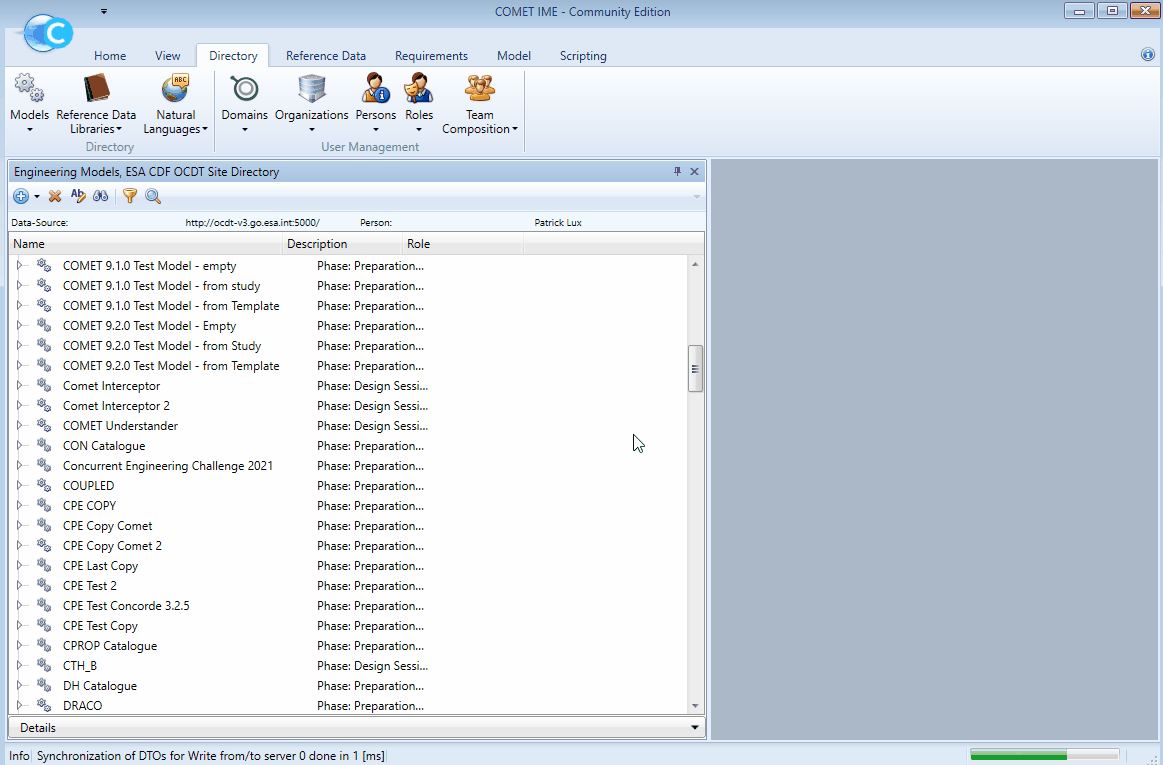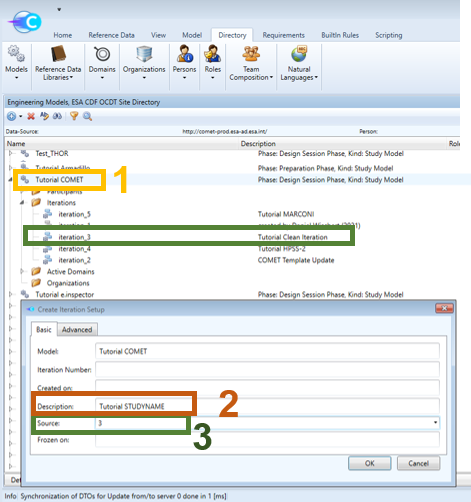Iterations
Table of Contents
- Creating an Iteration
- Inspecting Iterations
- Deprecating an Iteration
- Using Iterations in the Tutorial COMET model
The iterative design process is the basis of any CDF study where with each iteration the Study Model evolves compared to the previous iteration. Similarly, the COMET model uses Iterations to save a snapshot of the Study Model at different stages of the study progression. Only the latest Iteration is active; meaning it is the only one that can be edited.
Creating a new Iteration of a Study Model implies:
- The previously active Iteration is frozen. This Iteration can no longer be edited but can still be opened to retrieve values or to view the model structure.
- The new Iteration needs to be created based on an existing Iteration. This does not necessarily need to be the most recent previous Iteration but can be any previous Iteration allowing for the possibility to revert the model back to any earlier Iteration.
- After the creation of a new Iteration any user opening the model will open the active Iteration by default. In order to open a previous Iteration the user must manually select this when opening the model.
Iterations are typically created at the following points in a study:
- After a full design Iteration by all subsystems including budgets has been presented in a CDF session.
- Before the start of the Internal Final Presentation (IFP) to freeze the status presented at IFP.
- Before the introduction of major changes to the model such as: introduction of multiple Options, new Finite State Lists or large changes in the model architecture.
Creating an Iteration
To create an Iteration:
-
From the Directory tab open the Models browser
.
-
Find the Study Model in question.
-
Expand the
Iterationssection of the model to have a quick overview of all existing Iterations. -
Right-click the model and select
Create an Iteration Setup. -
Enter a
Descriptionfor the new Iteration to be created. -
Select another Iteration within the model as
Sourcefor the new Iteration. The starting point of the new Iteration will be identical to the current status of the source Iteration.NOTE: The remaining fields cannot be edited by the user at this point
-
Confirm with
Ok.
NOTE: Iterations can only be created while a model’s Study Phase is set to Design Session Phase, Reporting Phase or Completed Study. In the Preparation Phase used prior to study kick-off no Iterations can be created (see study phases)
NOTE: Users currently logged into the model will not be notified of the creation of a new Iteration. However, when a new Iteration is created they will not be able to perform any changes in the model after their currently active Iteration is frozen, nor will they be able to switch Iterations without closing and re-opening the model in COMET. It is therefore recommended to create new Iterations outside of CDF sessions and peak COMET usage times
Inspecting Iterations
From the full list in a model, the user can also inspect the Iterations:
-
Expand the
Iterationssection of the model to have an overview of all existing Iterations. -
Right-click any Iteration and select
Inspect.This can be useful to understand how Iterations are based upon each other (in case Iterations have been created from sources other than the currently active Iteration) as well as to see at what time the Iteration has been frozen (i.e. at what time a follow-up Iteration has been created, note the timestamp in UTC)

Deprecating an Iteration
From the list of Iterations in a model, the Model Administrator can also deprecate Iterations:
-
Expand the
Iterationssection of the model to have an overview of all existing Iterations. -
Right-click any Iteration and select
Delete.
The Iteration will be marked as greyed out in the list and no model participant will be able to access it anymore.
Using Iterations in the Tutorial COMET model
For the introduction of CDF Newcomers it is recommended to use the “Tutorial COMET” model. This will provide an area for newcomers and experts to try out COMET functionalities without any implications on the actual Study Model.
For the CDF Newcomer Introduction session it is recommended to create a new Iteration on the “Tutorial COMET” model in order to start with a clean Iteration without traces of previous tutorial sessions.
To prepare the “Tutorial COMET” model:
-
Follow steps 1-4 from Creating an Iteration on the “Tutorial COMET” model.
-
In the
Descriptionfield of the new Iteration use the recommended naming schemeSTUDYNAME Tutorial. -
As the
Sourcefor the new Iteration selectiteration_3of the “Tutorial COMET” model (also labelled as “Tutorial Clean Iteration”).